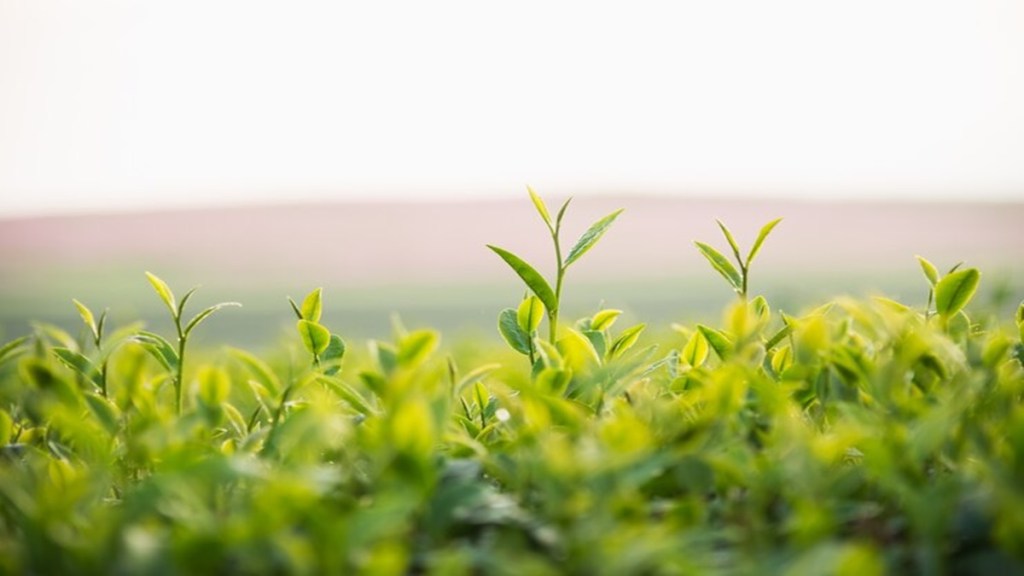By Dipti Deshpande and Sharvari Rajadhyaksha
When it pours, agriculture reigns. A copious south-west monsoon and larger kharif acreage mean India’s “agriculture and allied activity” sector would sprout at a healthy clip this fiscal.
The government’s second-quarter estimate of 3.5% growth for the sector — the fastest in five quarters — underlines the upturn. Adequate rains pay off too, by replenishing groundwater and reservoirs, which benefit the winter, or rabi, crops. Such a material rebound in farm growth from the last fiscal year’s emaciated 1.4% bodes well for rural incomes and can stoke private consumption, which had crimped last fiscal on sluggish demand in the hinterland.
Adverse weather events in recent years have repeatedly caused stress in rural areas because cultivation continues to be the primary source of household incomes. But what is salutary is that rural households have been trying to safeguard by diversifying their income streams. There has been a distinct decline in their dependence on agriculture (or pure cultivation) incomes, while that from livestock rearing and wage labour (including construction work) is rising.
According to a National Sample Survey Office report, between 2013 and 2019, the share of cultivation in total agricultural household income fell from 48% to 37%, while that of wage labour rose from 32% to 40% and that of livestock rearing from 12% to 16%. A National Bank for Agriculture and Rural Development (Nabard) survey also points to a surge in diversification of income sources to attain resilience. In 2021, 56% of agricultural households surveyed reported three or more sources of income, up from 35% in 2017.
The nudge would have been better visibility and lesser fluctuation in incomes. We focus on the shifts within the agriculture and allied sector and see how this shift is reflected in the output data.
The allied sector (within the agriculture and allied category), which includes livestock, fishing and forestry, is playing a much larger role than traditional crop production. The share of allied sector gross value added (GVA) in the agriculture and allied category had been broadly stable at ~35% until FY14 but rose to almost 46% by FY24. At the same time, the share of traditional crop GVA fell to 54%.
Much of this gap is because of an increase in the share of livestock in the agriculture and allied sector GVA from about 23% to 30%. The share of fishing, though relatively small, rose from 5% to over 7%. The average growth of over 6% in allied sector GVA during this period is strikingly higher than the sub-2% growth in crop GVA.
The rising share of allied sector activity is even more interesting at the sub-national level. Rajasthan, Jharkhand, Haryana, Maharashtra, and Bihar saw a sharper increase in the share of allied sector GVA compared to other states. This corresponds with weaker (than the national average) crop GVA performance in these states. A striking contrast is Madhya Pradesh, where the crop GVA outperformed. Consequently, the share of allied sector output in this state saw the smallest increase relative to others.
Two reasons for the gravitation towards allied activity are climate vagaries and changing patterns of demand. Weather disruptions — uneven monsoon, extreme heat, floods, and cyclones — and pest attacks have been hurting crop production, persuading rural folk to find ways to guard incomes.
According to the Nabard survey, in 2017 about 54% of agricultural households reported distress due to irregular rain and extreme weather. These shocks were dealt with by deploying personal savings, taking loans, or borrowing from relatives, which would typically aggravate the financial stress over time.
But by 2021, the survey found, the distress had reduced — 30% of households had to endure weather-driven crop failure. In both these years, the proportion of agricultural households facing loss of livestock due to floods and diseases, among others, was low at ~10%.
This suggests two things. One, households engaged in livestock rearing are exposed to lower adverse exogenous shocks than those engaged in cultivation. While weather-related challenges can affect allied sector activity as well, these sub-sectors are more resilient to risks from climate change in the short term. Two, diversification of income sources between these two periods could have reduced exposure of household incomes to weather shocks.
The second factor supporting the shift to allied activity is the rising demand stemming from changing dietary preferences — more protein products derived from livestock and fishing activities, such as milk and milk products, egg, meat, and seafood are being consumed.
According to the latest household consumption expenditure survey, the share of these items in food consumption rose from 24% in 2011-2012 to about 29% in 2022-2023 in rural India and from 25% to almost 28% in urban India. Globally, too, demand for India’s meat and seafood exports is increasing.
Policy initiatives have played a supportive role in promoting allied sector activity, including subsidies for establishing poultry and livestock farms, promotion of research under the National Livestock Mission since 2014, and the Pradhan Mantri Matsya Sampada Yojana since 2016 to improve fisheries infrastructure.
This shift in rural incomes, with reduced dependence on agriculture, or pure cultivation, is an encouraging trend that also helps pull out excess and disguised labour from the sector. Given that a majority of rural employment remains in the agriculture and allied sector, it is crucial to build resilience to ensure rural India does not fall behind.
Climate caprice will continue to apply pressure on the rural economy. A major structural shift is already underway in the allied segment of the agrarian economy. Now is the time and opportunity to ratchet up resilience core agriculture sector.
The writers are respectively principal economist & economic analyst, CRISIL.
Disclaimer: Views expressed are personal and do not reflect the official position or policy of FinancialExpress.com. Reproducing this content without permission is prohibited.

